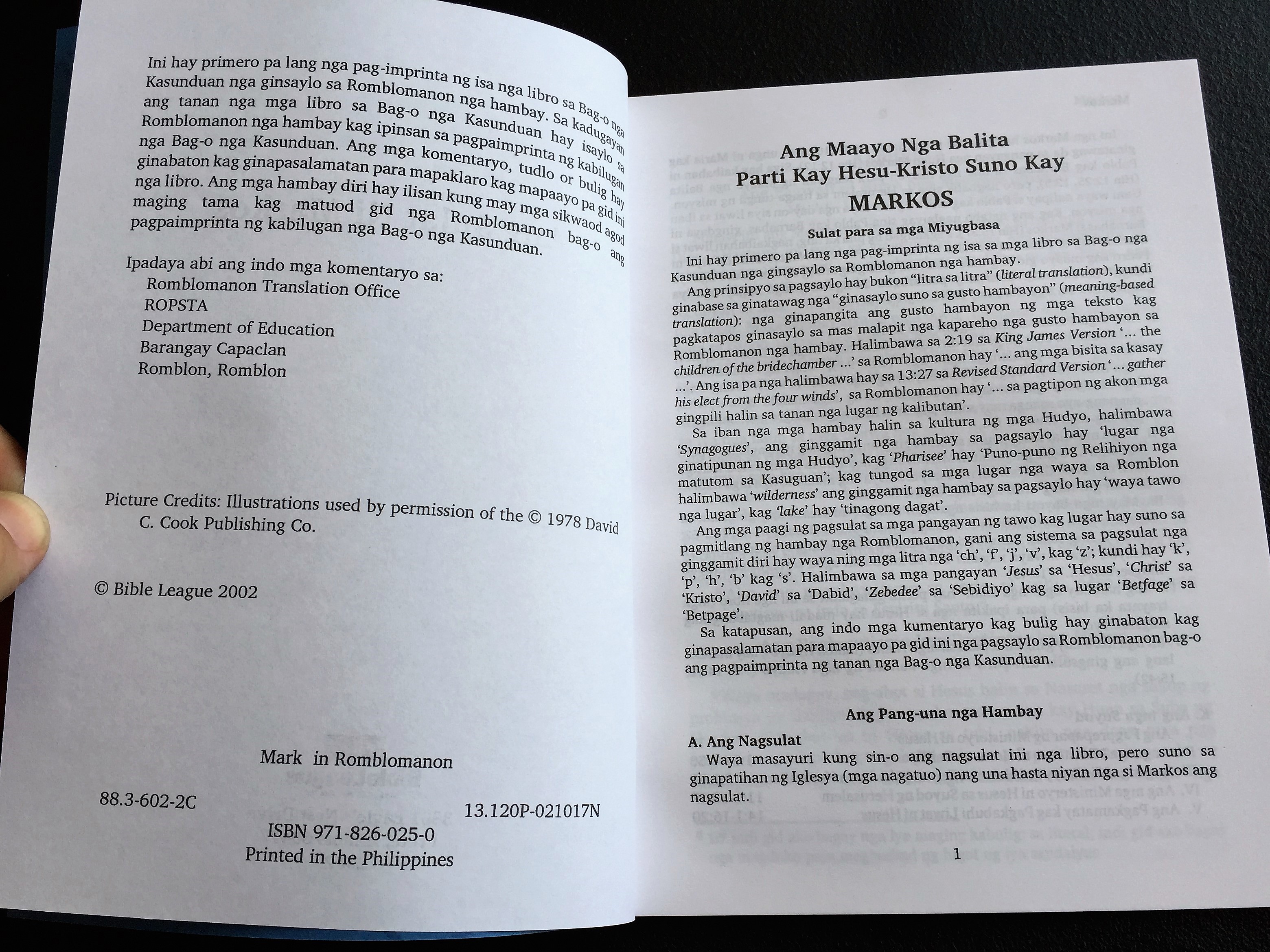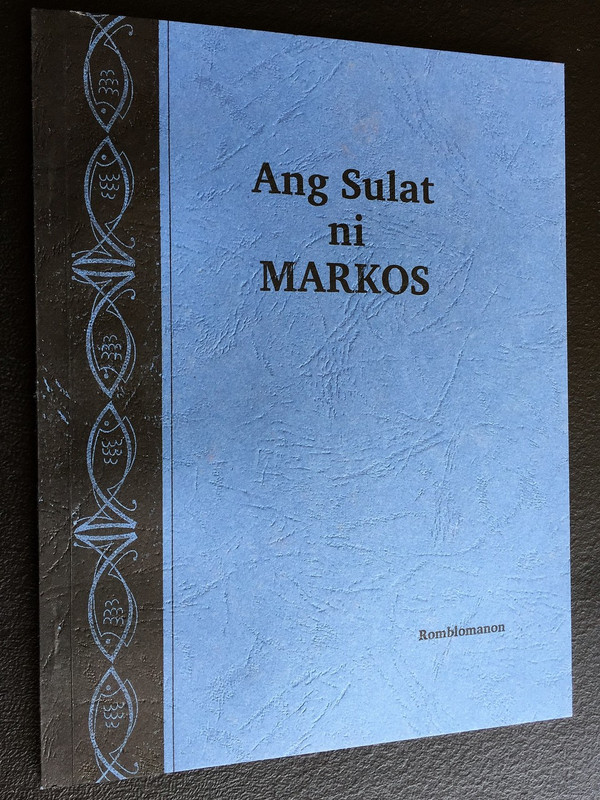Description
The Gospel of Mark in Romblomanon Language – Ang Sulat ni Markos
ISBN: 9718260250
Overview
Explore the teachings of the Gospel with The Gospel of Mark in Romblomanon Language, titled Ang Sulat ni Markos. This paperback edition serves as a vital resource for the Romblomanon-speaking community, providing a clear and accessible translation that reflects their cultural heritage.
Susiha ti naimbag a pagtuturo ti Ebanghelyo iti The Gospel of Mark in Romblomanon Language, nga titulado Ang Sulat ni Markos. Daytoy a paperback nga edisyon ket maysa a napateg a kapanguhaan para kadagiti agsasao iti Romblomanon, a mangipaay iti naawat ken accessible a hubad ti Ebanghelyo a mangipakita ti kultural a pagkatao da.
Product Features
- Language: Romblomanon (also known as Ini, Tiyad Ini, Basi, Niromblon, and Sibuyanon)
- Region: Spoken in the province of Romblon, including the islands of Tablas, Sibuyan, and Banton.
- Total Speakers: Approximately 94,000 speakers as of 2011.
- Publisher: Bible League
- Printed in: Philippines, 2002
- Cover Type: Paperback
- Total Pages: 64
Unique Features
- Book Introductions: Contextual background for the Gospel.
- References: Helpful annotations for deeper understanding.
- Color Maps / Mga Mapa: Visual aids for geographical context.
- Illustrations: Enhancing the reading experience.
Interesting Facts
- The Romblomanon language is an Austronesian regional language spoken alongside Asi and Onhan in the province of Romblon.
- The language is known for its unique phonetic features, including sounds that are less common in other Philippine languages.
- The Romblomanon dialect is closely related to other Visayan languages, facilitating mutual understanding among speakers from nearby regions.
John 3:16 Translation
“Mahal na Diyos, tinuod ang kasulatan sa katawhan sa kalibutan, siya nga naghatag sa iyang bugtong nga Anak aron ang bisan kinsa nga magtuo kaniya dili mawala, kundi magkinabuhi nga walay katapusan.”
Publishers
- Bible League
- Printed in the Philippines
We value your feedback! Share your experience with this product to help others make informed decisions. Your review is important to us!
Gihalokan namo ang inyong feedback! Ipaambit ang inyong kasinatian sa maong produkto aron matabangan ang uban sa paghimo og maayong mga desisyon. Importante kaayo ang inyong review para sa amoa!
Hashtags
#RomblomanonBible #AngSulatNiMarkos #PhilippineBible #ChristianLiterature #BibleInYourLanguage #Faith #CulturalHeritage #LanguagePreservation #BuyOnline #RareBooks
#RomblomanonBible #AngSulatNiMarkos #Bibliya #KristohanongLiteratura #BibliyaSaImongSinultihan #PagpalitOnline #HimalangKulturangPanulatan



































